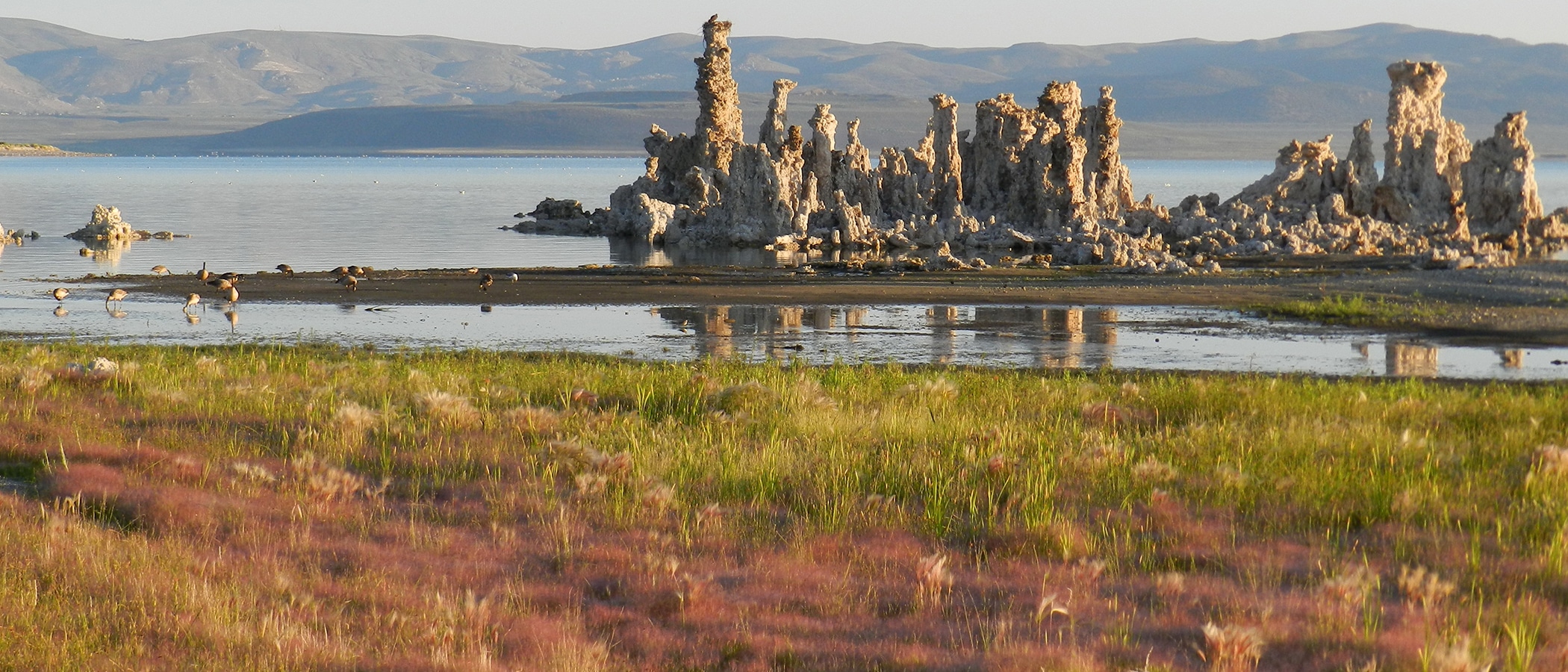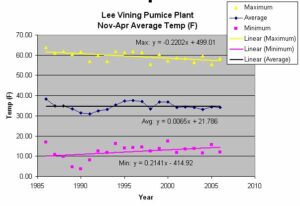
Weather stations have been collecting weather data in the Mono Basin since the 1980s, some even as far back as 1931. This long-term data can be helpful in understanding the basin’s present and future climate.
Recently analyzed data, collected between 1986 and 2006 at the Lee Vining Pumice Plant, just a little over a mile from Mono Lake, show that low air temperatures are increasing at a rate of 1.2 degrees Fahrenheit every ten years. Even more interestingly, annual winter air temperatures seem to be moderating, meaning that the extremes between the low and high air temperatures are decreasing. Is this just a fluke of the data, or are there more complex climate variables at play? Perhaps there is a simple explanation for these trends?
A couple possibilities:
Between 1994 and 2006, Mono Lake’s water level increased 10 feet, and it is possible that the resulting 20% increase in the volume of the lake is helping to moderate air temperature in the basin. Water is very good at absorbing energy and is thus a key component in determining air temperature trends. For example, where there is higher atmospheric water content, such as along the coasts, temperatures do not vary as much between night and day because water traps the sun’s energy, keeping the temperature up even after the sun has set. Contrast this with a desert where there is very little atmospheric moisture. Air temperatures are dramatically cooler at night because there is no water to trap the sun’s rays. Some have wondered if it might be possible that the larger Mono Lake since 1994 has affected humidity enough to decrease the variability in temperatures near the lake. Also, as the lake dropped between the 1940s and 1980s, a cooling trend is evident in weather data from the Mono Inn–perhaps due to more wintertime and nightime heat loss as the lake receded away from that weather station? This would need further study to determine, but it is fun to think about.

Now, what about climate change? Well, winter air temperatures are definitely increasing. This shows up not only in the Pumice Plant data, but in two other recently-analyzed weather station data sets: the Lee Vining and Cain Ranch weather stations. In addition to a decrease in air temperature variability, there is a visible warming trend, particularly after 1981. This compliments trends observed by a recent NASA study reporting a rise in average nighttime surface water temperatures during July, August and September between 1992 and 2008. However, the relationship between lake water temperatures and air temperature trends cannot be confirmed without further study.
There are many variables when considering climate and more long-term data is always better for complete analysis. Increasing lake level and climate change are just a couple of them. Micro climates within the Mono Basin, as well as each weather station’s unique data collection period, make weather analysis difficult for basin-wide conclusions. Nonetheless, these trends do beg the question, when the lake rises an additional 10 feet, reaching its management level of 6392 feet above sea level, will the local air temperature be moderated? And if so, what impact would higher global temperatures have? All in a day’s musings…
